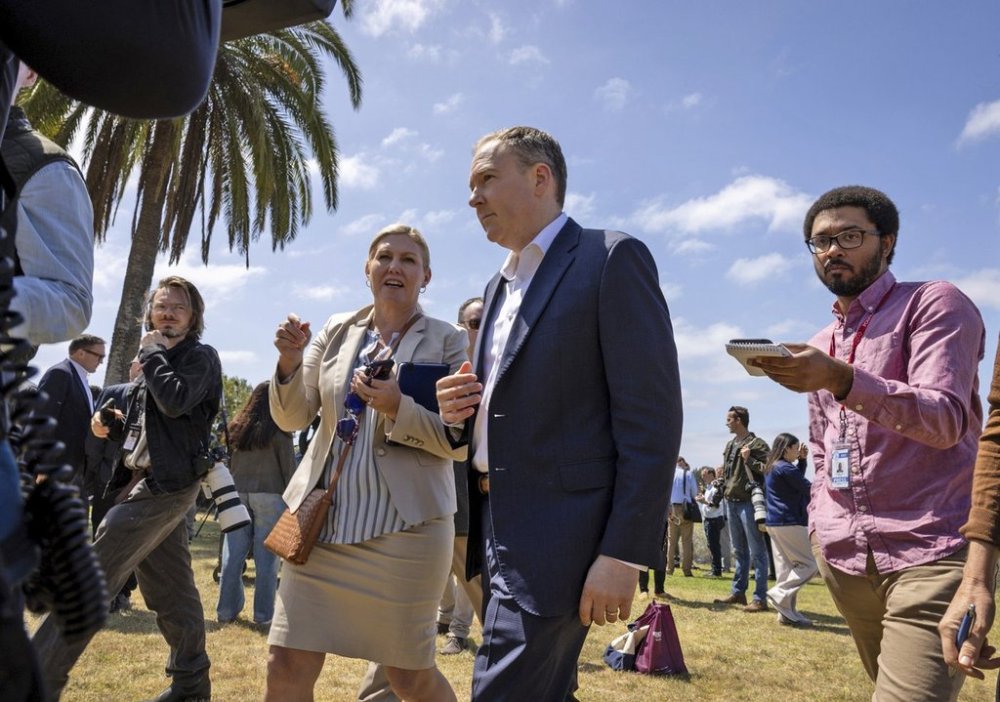EPA chief demands that Mexico stop Tijuana sewage from flowing into California
Advertisement
Read this article for free:
or
Already have an account? Log in here »
To continue reading, please subscribe:
Monthly Digital Subscription
$0 for the first 4 weeks*
- Enjoy unlimited reading on winnipegfreepress.com
- Read the E-Edition, our digital replica newspaper
- Access News Break, our award-winning app
- Play interactive puzzles
*No charge for 4 weeks then price increases to the regular rate of $19.00 plus GST every four weeks. Offer available to new and qualified returning subscribers only. Cancel any time.
Monthly Digital Subscription
$4.75/week*
- Enjoy unlimited reading on winnipegfreepress.com
- Read the E-Edition, our digital replica newspaper
- Access News Break, our award-winning app
- Play interactive puzzles
*Billed as $19 plus GST every four weeks. Cancel any time.
To continue reading, please subscribe:
Add Free Press access to your Brandon Sun subscription for only an additional
$1 for the first 4 weeks*
*Your next subscription payment will increase by $1.00 and you will be charged $16.99 plus GST for four weeks. After four weeks, your payment will increase to $23.99 plus GST every four weeks.
Read unlimited articles for free today:
or
Already have an account? Log in here »
Hey there, time traveller!
This article was published 22/04/2025 (192 days ago), so information in it may no longer be current.
SAN DIEGO (AP) — The head of the Environmental Protection Agency said Tuesday that Mexico must stop the flow of billions of gallons of sewage and toxic chemicals from Tijuana that has polluted the Pacific Ocean off neighboring Southern California, closing beaches and sickening Navy SEALs who train in the water.
Lee Zeldin made the demand during an Earth Day trip to the California-Mexico border, where he toured a plant in San Diego County that treats the sewage as a secondary facility and flew along the frontier to see the Tijuana River. He also was scheduled to meet with SEALs.
Zeldin said that in the next day or so, his agency will present Mexico a to-do list of projects to resolve the decades-long environmental crisis, but he stopped short of specifying how the Trump administration would hold Mexico accountable if it does not act.

The problem is “top of mind” for President Donald Trump, Zeldin said, while adding that they have not talked about possibly imposing tariffs if nothing is done.
“We’re going to know whether or not Mexico is going to do its part to resolve it, and then we’ll go from there, as far as strategy and tactics,” Zeldin said.
Alicia Bárcena, Mexico’s Environment and Natural Resources secretary, said her country also wants to resolve the problem. She met with Zeldin the previous evening and said they made progress in finding solutions.
“We are here because we want to solve this,” Bárcena said in a statement in Spanish. “Not only so there is no untreated wastewater on Mexican beaches, but in the United States as well.”
The 120-mile (195 km)-long Tijuana River runs near the coast in Mexico and crosses into Southern California, where it flows through Navy-owned land and out to the Pacific.
As Tijuana’s wastewater treatment plants have aged and its population and industry have boomed, an increasing amount of toxins have made their way into the river and into San Diego County — since 2018, more than 100 billion gallons of raw sewage laden with industrial chemicals and trash.
The pollution has sickened not only swimmers, surfers and lifeguards but also schoolchildren, Border Patrol agents and others who do not even go in the water. Scientists say the sewage is vaporized when it foams up and enters the air people breathe.
The Navy is reviewing whether to relocate its training site for SEAL candidates after the Naval Special Warfare Center reported 1,168 cases of acute gastrointestinal illnesses of its recruits from 2019 to 2023.
California beaches near the border have been closed more often than not over the past four years.
Since 2020 more than $653 million in funds have been allocated to address the issue, but the crisis has continued largely because of delays by the Mexican government, Zeldin said. He added that he and Trump are hopeful that will change under the relatively new administration of President Claudia Sheinbaum, who took office last October.
Zeldin said that after meeting with Mexico officials in San Diego for 90 minutes, he was left with the impression that Sheinbaum and her environmental secretary want to have a “strong collaborative relationship.”
“What’s being communicated by the new Mexican president is an intense desire to fully resolve this situation,” Zeldin said. But he made clear that he wants Mexico to step up.
“There’s no way that we are going to stand before the people of California and ask them to have more patience and just bear with all of us as we go through the next 10 or 20 or 30 years of being stuck in 12 feet of raw sewage and not getting anywhere,” he said. “So we are all out of patience.”
Flanked by lawmakers from both parties, Zeldin noted that cleanup efforts have rare bipartisan support.
Zeldin visited the South Bay International Wastewater Treatment Plant, which was built with funds from both countries to treat 25 million gallons per day as a secondary plant on the U.S. side.
Mexico is working on several wastewater treatment projects to reduce the flow and make major upgrades to its existing plants. Bárcena said the now-repaired San Antonio de los Buenos plant, which went back to operating at full capacity this month, should make a difference.
But Zeldin said Mexico must complete a number of other projects, including installing floodgates to collect trash in Tijuana. Another one being considered would divert 10 million gallons of sewage away from the shore.
___
Associated Press writer María Verza in Mexico City contributed.


